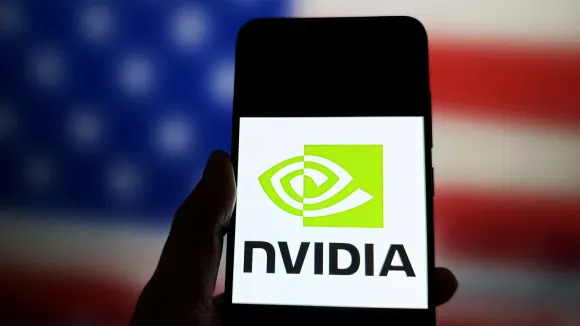## Tech Giants, Electric Dreams, and Global Resources: Today’s Tickers Tell a Story
The stock market is a symphony of data points, each tick and tock reflecting the hopes, fears, and aspirations of investors worldwide. Today’s melody is a particularly interesting one, with a diverse range of trending tickers painting a picture of innovation, sustainability, and global economic shifts.

From the tech titan Apple to the burgeoning electric vehicle maker Rivian, from the global IT giant Infosys to the language-learning app Duolingo, and even down to the earth-moving operations of Rio Tinto, the stories behind these trending tickers offer a glimpse into the forces shaping our world.

Apple’s Slip in China: A Sign of Shifting Tides?
Market Share Shake-up

Apple’s shares took a hit on Thursday, closing 4% down after data from technology market analyst firm Canalys revealed a significant decline in Apple’s market share in mainland China’s smartphone market. The iPhone maker slipped to third place, trailing behind Vivo and Huawei, with a 15% market share. This drop comes despite a 4% year-on-year growth in the overall mainland China smartphone market, which shipped 285 million units in 2024. The research firm attributes this growth to the high-end peak season, government subsidies, and year-end promotions.
While Apple held the top spot in the fourth quarter with 13.1 million units shipped, it faced a 25% year-on-year decline in shipments due to intensified competition from domestic brands.
Competition Heats Up
The rise of domestic Chinese smartphone manufacturers like Vivo and Huawei has put pressure on Apple’s dominance in the region. These brands have been aggressively expanding their product offerings, focusing on innovation and affordability, and leveraging strong local brand recognition.
According to Canalys, Vivo emerged as the market leader with a 21% share, followed by Huawei with 18%. This shift in market dynamics highlights the growing strength of Chinese brands and their ability to challenge global giants like Apple.
Strategies for Reclaiming Ground
To regain lost ground in China, Apple will need to adapt its strategies and address the evolving consumer preferences. Some potential approaches include:
- Focusing on product differentiation: Apple could emphasize its premium design, user experience, and ecosystem advantages to appeal to high-end consumers.
- Expanding its product portfolio: Offering a wider range of models at different price points could help Apple capture a broader market share.
- Strengthening its local partnerships: Collaborating with Chinese carriers, retailers, and developers could enhance Apple’s distribution and customer reach.
- Engaging with Chinese consumers: Understanding local trends, preferences, and cultural nuances can help Apple tailor its marketing and product offerings.
Rivian Rides the Green Wave: Government Funding Fuels Expansion
Biden Administration’s Commitment
The Biden administration’s commitment to boosting the US electric vehicle (EV) industry received a significant boost with the finalization of a $6.57 billion (£5.38 billion) loan for Rivian to finance its manufacturing facility in Georgia. This funding comes just days before the inauguration of President-elect Donald Trump, amidst concerns about the future of the Department of Energy loan program under his administration.
Impact on EV Industry
This substantial loan is expected to accelerate the adoption of EVs in the US by supporting Rivian’s ambitious production plans. The funding will enable Rivian to construct a nine million square foot facility capable of manufacturing up to 400,000 electric SUVs and crossover vehicles annually.
Rivian’s growth could have a ripple effect on the broader EV market, encouraging competition and driving innovation. It could also contribute to the US government’s goal of achieving carbon neutrality and reducing reliance on fossil fuels.
Rivian’s Growth Trajectory
The Georgia facility is a key part of Rivian’s plan to expand production and meet growing demand for its vehicles. Construction is expected to commence in 2026, with customer vehicle production slated for 2028. This expansion will significantly increase Rivian’s manufacturing capacity and allow it to scale its operations effectively.
The company’s founder and CEO, RJ Scaringe, sees this loan as a critical step in Rivian’s journey: “This loan will help us accelerate the launch of our Georgia plant for R2 and R3, providing thousands of jobs in the state.”
Infosys: Navigating the Tech Landscape Amidst Global Uncertainty
Performance and Outlook
Infosys, a leading global IT services company, recently reported its financial results for the quarter ended December 31, 2023, showcasing a resilient performance despite the challenging global economic environment.
The company reported strong revenue growth and profitability, exceeding market expectations. This performance reflects Infosys’ ability to deliver value to its clients and adapt to changing market dynamics. However, Infosys also cautioned about potential headwinds in the coming quarters due to global economic uncertainty and geopolitical tensions.
Impact of Geopolitical Tensions
The ongoing geopolitical conflicts and economic instability have created uncertainty in the global tech landscape. These factors can impact Infosys’ operations in several ways:
- Reduced client spending: Economic slowdowns and business uncertainty can lead to clients reducing their IT budgets, impacting Infosys’ revenue growth.
- Disruptions in supply chains: Geopolitical events can disrupt global supply chains, affecting Infosys’ access to critical components and resources.
- Talent acquisition challenges: Geopolitical tensions can make it harder for Infosys to attract and retain skilled talent, particularly in key markets.
Opportunities in Emerging Markets
Despite the challenges, Infosys sees opportunities for growth in emerging markets. These markets are experiencing rapid digital transformation and increasing demand for IT services. Infosys’ strong presence and local expertise in these regions position it well to capitalize on this growth potential.
Duolingo’s Language Learning Leap: Expanding Horizons Beyond Education
Beyond the Classroom
Duolingo, the popular language learning platform, is venturing beyond its traditional educational focus and exploring new avenues for growth. The company is diversifying its offerings to include corporate training programs and other language-related services, aiming to expand its reach and revenue streams.
Duolingo’s forays into the corporate training market are particularly noteworthy. By offering customized language learning solutions for businesses, Duolingo can cater to the growing demand for multilingual employees in a globalized world.
Monetization Strategies
Duolingo has adopted a multi-pronged approach to monetization. While its freemium model remains a cornerstone, the company is exploring new avenues for revenue generation, including:
- Subscription services: Duolingo Plus offers ad-free learning, offline access, and other premium features for a monthly fee.
- Corporate partnerships: Duolingo is partnering with businesses to offer customized language training programs.
- Content licensing: The company is licensing its language learning content to other platforms and organizations.
Competition in the EdTech Space
The EdTech landscape is increasingly competitive, with numerous players vying for market share. Duolingo faces competition from established players like Pearson and Rosetta Stone, as well as new entrants offering innovative language learning solutions.
To stand out in this crowded market, Duolingo needs to continue innovating, expanding its content offerings, and leveraging its strong brand recognition and user base.
Rio Tinto: Navigating a World of Shifting Resource Demands
Commodity Price Dynamics
Rio Tinto, a global mining giant, is navigating a complex landscape shaped by fluctuating commodity prices. The prices of key resources like copper and iron ore are influenced by a multitude of factors, including global economic growth, supply and demand dynamics, and geopolitical events.
Copper, essential for renewable energy infrastructure and electric vehicles, is experiencing strong demand. However, concerns about a potential global economic slowdown could impact copper prices in the future. Iron ore, a key ingredient in steel production, is also subject to price volatility driven by China’s economic performance and global steel demand.
ESG Considerations
Environmental, social, and governance (ESG) factors are increasingly important considerations for investors and stakeholders in the mining industry. Rio Tinto has made commitments to sustainable mining practices, including reducing its carbon footprint, improving its social performance, and ensuring ethical sourcing.
Rio Tinto’s efforts to address ESG concerns are crucial for maintaining investor confidence and securing long-term growth. The company’s performance in these areas can influence its reputation, access to financing, and ultimately, its profitability.
Future Growth Prospects
Rio Tinto’s long-term growth prospects are tied to the evolving global energy landscape and the increasing demand for critical minerals. The company is investing in new projects and technologies to expand its production of copper, lithium, and other minerals essential for the transition to a low-carbon economy.
Rio Tinto’s ability to adapt to these changing demands, manage its ESG risks, and navigate geopolitical challenges will be crucial for its continued success in the coming years.
Conclusion
From the tech behemoth Apple to the electric vehicle disruptor Rivian, and from the global IT giant Infosys to the language learning platform Duolingo and the mining titan Rio Tinto, today’s market movers paint a diverse picture of the global economy. We’ve explored how their recent performance reflects not only their individual strengths and challenges, but also broader trends like the enduring power of established brands, the surging demand for sustainable solutions, and the evolving nature of work and learning.
Understanding these trends is crucial for investors seeking to navigate the dynamic financial landscape. Whether you’re drawn to the stability of Apple, the growth potential of Rivian, the global reach of Infosys, the accessibility of Duolingo, or the resource-driven nature of Rio Tinto, these companies offer valuable insights into the forces shaping our world. As these tickers continue to move, they’ll undoubtedly spark further conversations, ignite new investment strategies, and ultimately contribute to the ever-evolving narrative of the global market. The question remains: which story will you choose to follow?
The financial markets are a reflection of our collective hopes, fears, and aspirations. By keeping a watchful eye on these trending tickers, we gain a glimpse into the future, a future where innovation, sustainability, and global interconnectedness will continue to drive both opportunity and uncertainty. The choice is ours: will we be the architects of our own financial destinies, or simply spectators in an ever-accelerating game?
